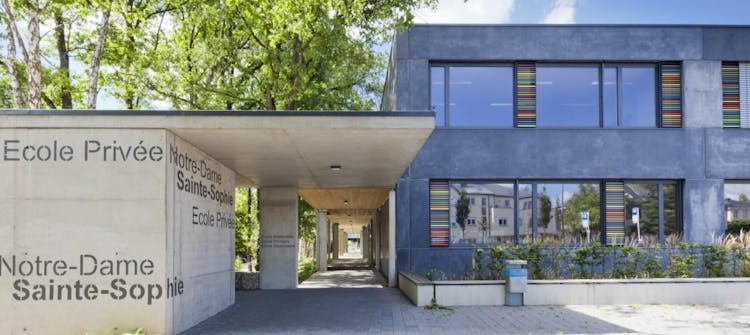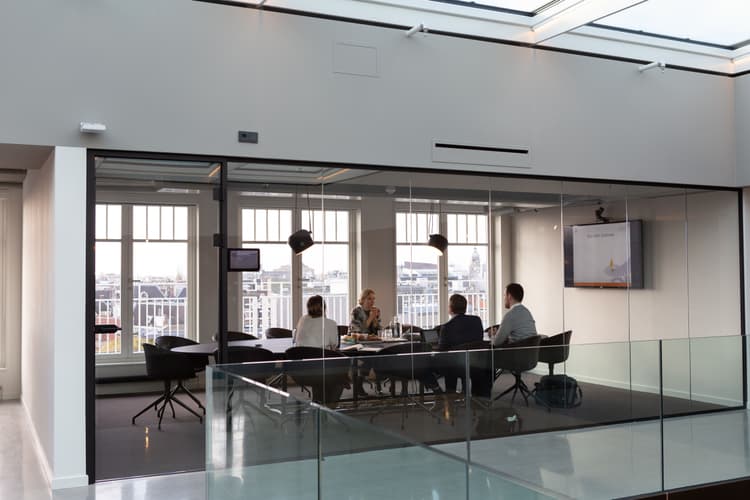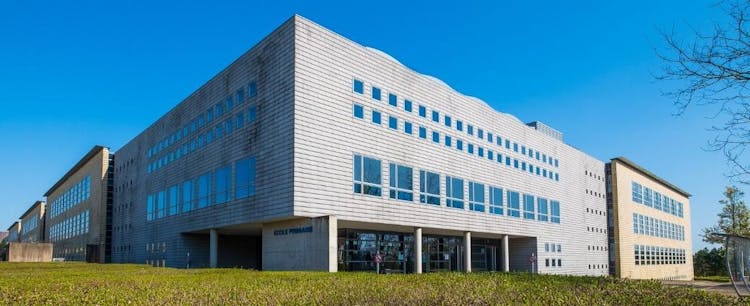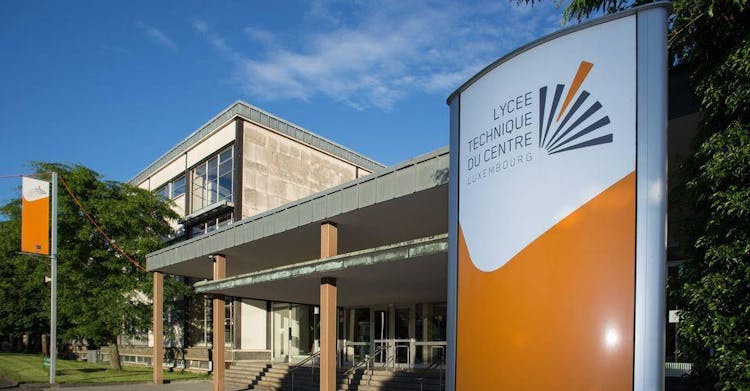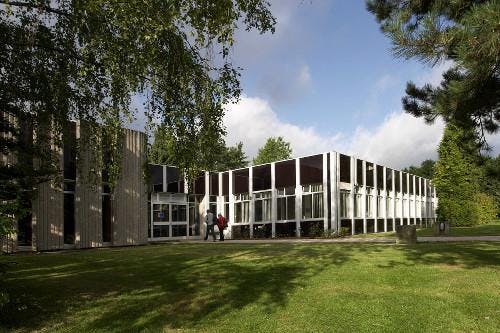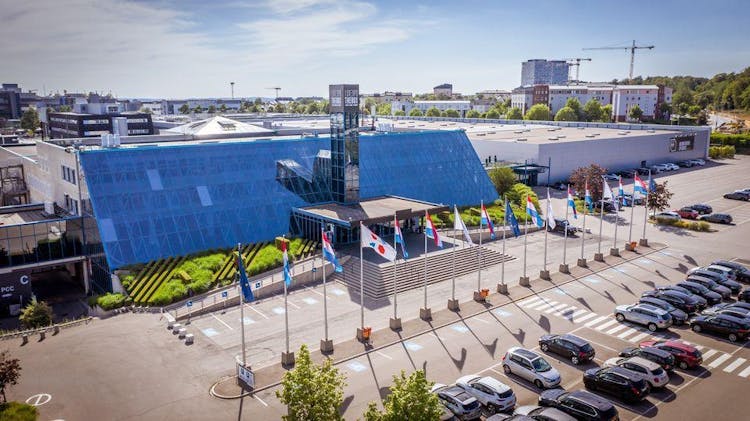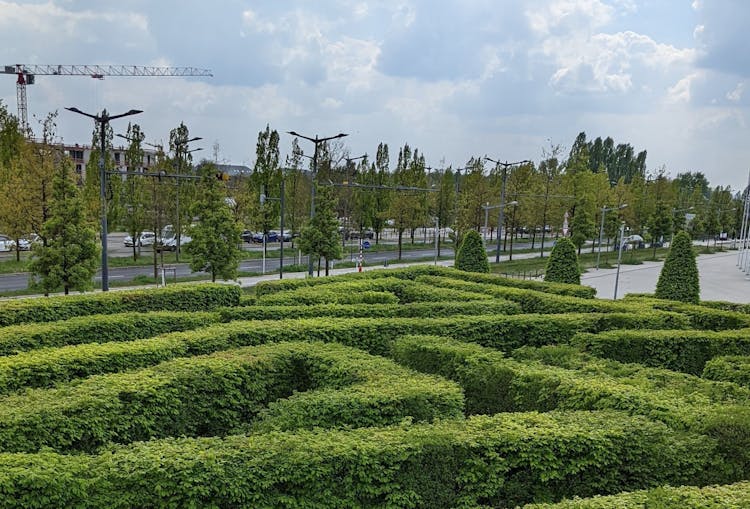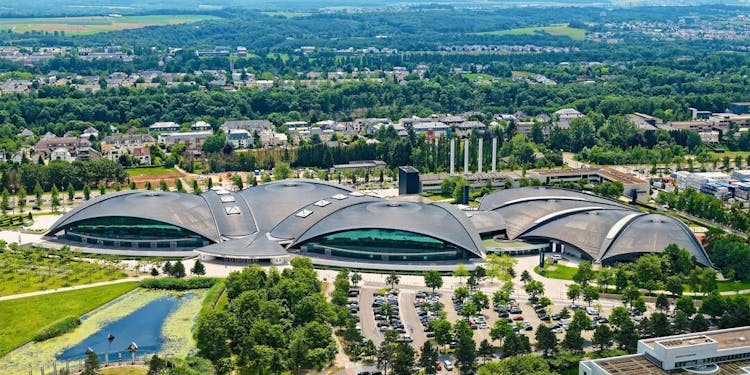
Kirchberg: a business hub in the heart of Luxembourg City
From its rich history intertwined with the EU's growth to its serene residential spaces away from the tourist crowds, Kirchberg stands as Luxembourg's vibrant and sought-after business hub. In this article, we will delve into what defines Kirchberg as residency spot, offering insights into the district's dynamic character.
Nestled in Luxembourg City’s northeast, Kirchberg is a bustling district known as the European Quarter. With its origins dating back to the 1950s and 1960s, Kirchberg has grown in tandem with the European Union's development, becoming an iconic business hub. However, it is much more than that. Kirchberg offers a unique blend of residential, cultural, and leisure opportunities, making it an attractive place to live, work, and explore.
General characteristics of Kirchberg
Living in Kirchberg offers a unique experience shaped by its vibrant atmosphere and evolving urban landscape. With a population of 8,746 as of January 2022, the district boasts a diverse community, with the majority being foreign residents comprising 73.8% of the population. Despite being a significant business hub, Kirchberg aims to strike a balance between commercial and residential areas.
Transport accessibility
Transportation in Kirchberg is highly accessible and well-connected. The neighborhood benefits from several bus lines that serve the area via Avenue Adenauer, providing convenient public transportation options. Additionally, the T1 tram runs along Avenue Kennedy, offering a direct connection to the Kirchberg district.
With the recent integration of the Pfaffentah funicular, the tram extends its reach to the lower Pfaffenthal district and connects to the transport hub there. Read more about the public transport in Luxembourg in our special guide article.
When it comes to reaching the city center from the Kirchberg neighborhood, there are several transportation options with varying travel times.




Renting and buying real estate
The Kirchberg district in Luxembourg, known primarily as a business and cultural hub, has now evolved into a thriving residential area. While the old Kirchberg district retains its charming "village" atmosphere, significant development projects are underway, particularly around Adenauer Avenue, to create a residential zone that will bring balance to the neighborhood.
Located near Weimerskirch in the north, Neudorf/Weimershof in the southeast, Clausen in the south, and Pfaffenthal in the east, Kirchberg enjoys a strategic position within Luxembourg.
For buying the average price is
For renting the average price is
This shows that the rental market in Kirchberg is slightly higher than in the city center, possibly due to the neighborhood's desirable location and amenities. The combination of a residential and business environment, along with its convenient location and evolving infrastructure.
Applications, search, and profound advice in our guide to renting
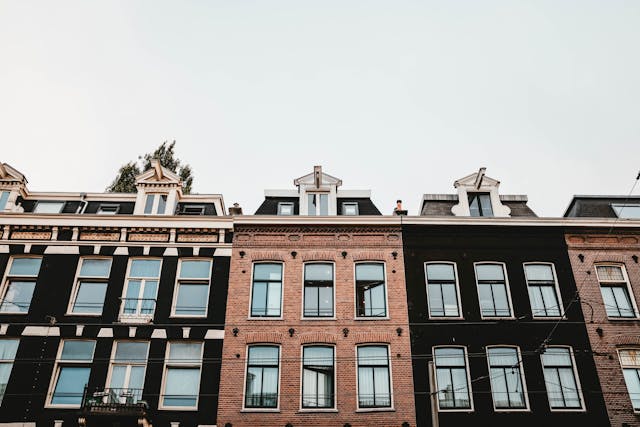
Infrastructure of the neighborhood
This dynamic neighborhood is home to an array of educational establishments, healthcare facilities, efficient transportation networks, shopping centers, and business institutions. In this section, we will explore the various facets of Kirchberg's infrastructure that contribute to the district's reputation as a modern and well-connected community.
Living in Kirchberg: advantages and disadvantages
Kirchberg attracts professionals and families seeking a vibrant yet tranquil environment. By day, the district bustles with activity, while in the evenings, visitors often retreat to neighboring Clausen, leaving behind a calm atmosphere for relaxation and unwinding.
The Kirchberg is extremely rich in cultural and sporting events, and its transport accessibility makes it one of the most popular neighbourhoods. However, this also brings with it some disadvantages. The neighbourhood can be considered quite noisy due to the large number of residents and guests who attend the events that take place here.
What can you find in this neighborhood of Luxembourg City
The area offers a myriad of educational institutions, business and recreational opportunities. Exhibitions and sporting events are regularly held here.
There are plenty of educational facilities, located in the district, which makes it more convenient for students, children in school and adults, who want to continue their their lifelong education.
European School
Saint Sophie Private School
Technical College Du Centre (Annexe Kirchberg)
One of the campuses of the University of Luxembourg
The Kirchberg neighborhood in Luxembourg is fortunate to have two prominent healthcare establishments as part of the Hôpitaux Robert Schuman group: The Kirchberg Hospital and the Bohler Clinic.
With over 306 independent doctors and an average of 2,250 employees. Residents of the Kirchberg neighborhood can rest assured knowing that they have access to state-of-the-art medical facilities and a committed team of healthcare professionals.
9, rue Edward Steichen, 2540 Luxembourg, (+352) 2 46 8, Website
There are a lot of important business communication centers located in this district of Luxembourg City. A lot of glass modern buildings represent the whole mood of the innovative quarters.
European Court of Auditors
Court of Justice of the EU
European Investment Bank
European Investment Fund
General Secretariat of the European Parliament
Eurostat
Banks buildings
The Kirchberg neighborhood offers a vibrant entertainment scene with a variety of attractions and venues to cater to diverse interests. From cultural exhibitions to outdoor spaces and sporting facilities, there is something for everyone.
Luxexpo Exhibition Centre
MUDAM
Musée Dräi Eechelen
Philharmonie in Luxembourg
Cinema in Kinepolis Kirchberg
National Library of Luxembourg
Learn more about Luxembourg's culture and traditions in our special guide.
The Kirchberg district in Luxembourg is home to several beautiful parks that offer a serene escape from the bustling city. One of these parks is the Arboretum du Kirchberg, a stunning arboretum located on the Kirchberg Plateau. Spanning over 30 hectares, it encompasses three distinct parks within the neighborhood.
Another destination for some nature in the busy center is Parc Central: a tranquil setting with lush greenery and serene pathways. Another park is Parc Réimerwee, offering a peaceful retreat with its scenic landscapes and relaxing atmosphere.
Lastly, there is Parc Römerwegpark, a great place to enjoy nature's beauty, and accessible by car. Whether it's for a leisurely stroll, a picnic, or simply to unwind amidst nature, these parks in Kirchberg offer a rejuvenating experience for residents and visitors alike.
The National Sporting and Cultural Centre, better known as d'Coque, is a prominent indoor arena located in Kirchberg. Originally built as an extension to the Olympic-size swimming pool in the late 1990s, d'Coque has evolved into the largest sports venue in Luxembourg.
Over the years, d'Coque has hosted renowned personalities, including the Dalai Lama and Elton John, and has been the venue for prestigious events like the Fencing World Cup.
Sports centre d'Coque
ING Night Marathon
In the vibrant Kirchberg neighborhood of Luxembourg, two prominent shopping centers cater to residents and visitors. We previously covered the best shopping centers in Luxembourg in our special featured article in the Knowlege library.
Historical overview
Kirchberg has a rich historical background, with its first mention dating back to a document from 1222. Originally part of the Weimerskirch section of the former commune of Eich, Kirchberg experienced significant developments over the years.
Formation
Initially, Kirchberg thrived on agriculture, but its urban development became closely intertwined with Luxembourg's role as the workplace for the European Coal and Steel Community, the precursor to the European Union, starting in 1952.
Part of Luxembourg
In 1961, the Kirchberg Plateau Urban Development Fund was established, which continues to be responsible for the ongoing development of Kirchberg. Today, Kirchberg stands as an important location for European, economic, cultural, and sporting institutions, as well as an attractive residential neighborhood.
Frequently Asked Questions (FAQ)
Are there residential areas in Kirchberg or is it solely a business district?
Apart from being a business center, does Kirchberg in Luxembourg have entertainment and culture venues?
Is Kirchberg well connected to the rest of the city in terms of transportation?
What is the cost of living in Kirchberg compared to other areas of Luxembourg?
Source: lequotidien.lu, www.euroschool.lu, saintesophie.lu, fr.wikipedia.org, thebox.lu, www.coque.lu, www.mudam.com
We took photos from these sources: Kaja Sariwating on Unsplash, European School website, Saint Sophie website, LTC Facebook page, University of Luxembourg, Kircherg Hospital, Rodeo Project Management Software on Unsplash, Luxexpo Facebook page, Thibault Milan on Unsplash. Il Vagabiondo on Unsplash
